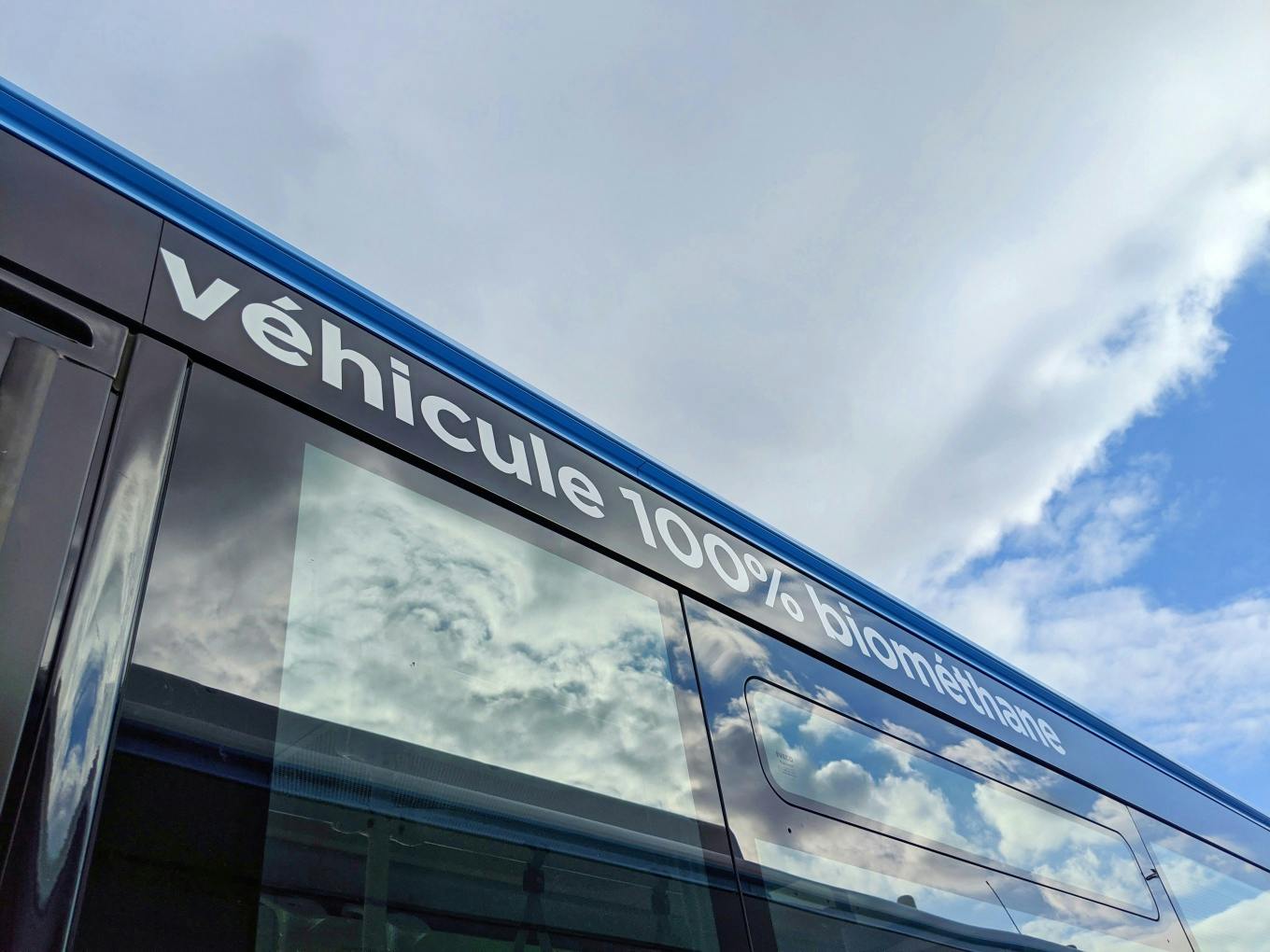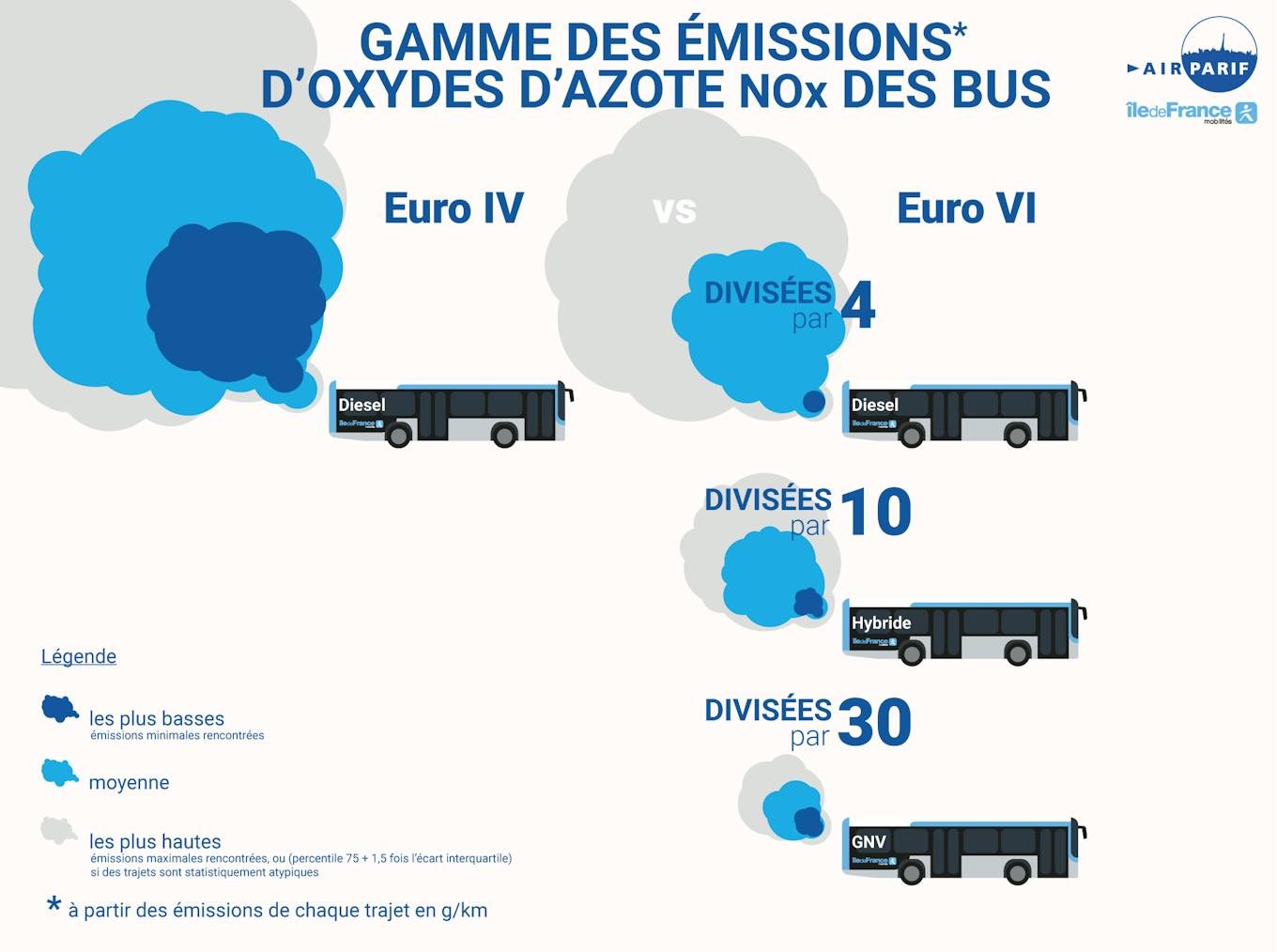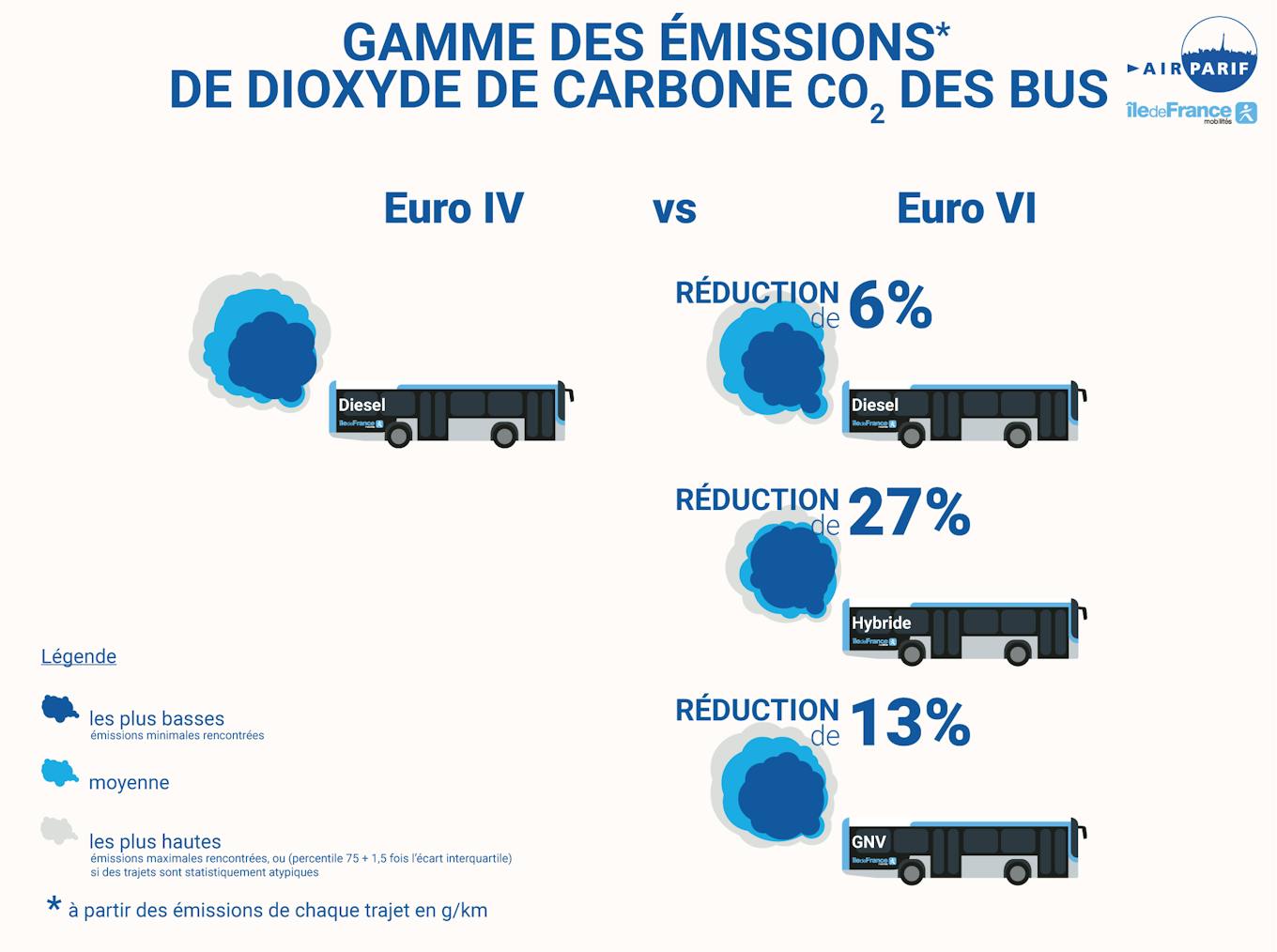Airparif study: in Île-de-France, buses pollute less

A large-scale study, in real conditions
Less polluting buses in Île-de-France? This is becoming a reality. It is Airparif that affirms this and it is Île-de-France Mobilités that is committed to it.
For two years, the institute conducted a large-scale study to measure, in real operating conditions, the rate of air pollutant emissions by buses in the Paris region.
Result? Fewer pollutants, that's a figure!
The results of this study: a reduction of around a third in annual emissions of nitrogen oxides (NOx) and exhaust particulate matter (PN) and CO2 emissions from buses by less than 5%.
These encouraging figures can be explained by the policy of replacing the most polluting buses carried out by Île-de-France Mobilités.
The replacement between 2014 and 2020 by Île-de-France Mobilités of more than 2,000 buses (Euro II, III and IV) out of an initial fleet of more than 9,000 vehicles with newer buses (Euro VI, hybrid, CNG and electric buses) hasreduced annual emissions of nitrogen oxides (NOx) and exhaust particles (PN) by around a third and CO2 emissions from buses by less than 5%.
At the same time, the transport offer has developed with more than 1,000 additional recent buses.


Diesel buses, hybrid buses and CNG buses: all tested
The Airparif study was carried out on 1600 journeys in real traffic and use conditions : with passengers, variable weather, on Parisian lines but also in the inner and outer suburbs, taking into account the particular emissions due to cold starts.
28 buses with different standards and technologies were tested : Euro IV Diesel, Euro VI Diesel, Euro VI hybrid, and Euro VI CNG (Compressed Natural Gas) buses. Euro V buses were deliberately not included in the scope of the study, as there was no significant technological breakthrough between Euro IV and Euro V vehicles.
What levers can be used to reduce emissions?
The study conducted by Airparif identified several factors influencing pollutant emissions.
- The vehicle's engine technology - and it is on this major lever that Île-de-France Mobilités intervenes by eventually replacing all its diesel buses with electric or BioNGV buses
- The different pollution control systems, their adjustments and maintenance: non-optimal operation of the pollution control systems can cause NOx or NO2 emissions 10 to 100 times higher. This situation, which is very rarely encountered during the study, can lead to a great variability in emissions
- Exhaust temperature : when it is too low, it can prevent the pollution control system from operating optimally and thus increase NOx emissions
- Ambient temperature and cold start : with a cold engine, or with a hot engine during a low ambient temperature, the combustion and operating conditions of pollution control systems are not always optimal, leading to an increase in NOx emissions. Low ambient temperature can also lengthen the cold start time
- Driving mode : Less smooth driving can lead to higher CO2 and particulate emissions. However, new vehicles are generally less influenced by this parameter.
See you in 2022
To ensure that there are fewer and fewer polluting buses on the roads of Île-de-France, Île-de-France Mobilités' action to improve air quality continues with vehicle renewals that continue. A long-term commitment, the latest results, measured again by Airparif, will be unveiled in the first quarter of 2022.